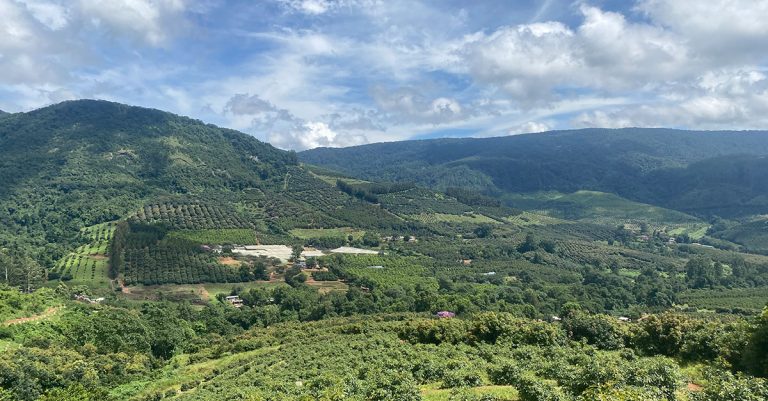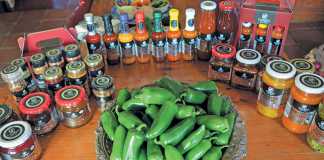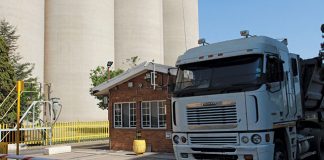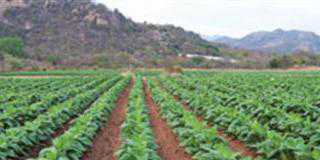
During the 1930s, thousands of macadamia cultivars were trialled in Hawaii in search of the highest-quality nuts for the commercial industry.
The trials were headed by Prof Bill Storey and followed by Prof Dick Hamilton. A new Australian selection, NSW44, which was numbered 695 in the HAES gene bank, later to be given the name Beaumont, was rejected for its inability to naturally drop its own crop. It had passed all other quality tests conducted by the University of Hawaii.
Len Hobson, a well-loved horticulturist in South Africa, is known for having pioneered the macadamia industry here and for having developed the Papino®.
During a visit to California for a citrus symposium in 1968, Hobson visited an important macadamia trial-planting farm. Among the trees planted there was the HAES 695 selection. Hobson also visited the first commercial planting of 695, which belonged to the chairperson of the Californian Macadamia Society, Col Wells Miller.
Hobson recalls that the young trees were laden with nuts. After visiting both sites, Hobson fell in love with Beaumont, and he began the preparation to import material into South Africa.
Once Hobson had established the 695-mother material in his nursery, he immediately experimented with clonal propagation and realised the importance to pursue the cultivar for commercial use.
In his record-keeping, he noted that a high-quality rootstock coupled with an above-average kernel (and an exceptionally precocious nature) would be a winner if propagated properly.
In 1971 and again in 1975, Hamilton visited Hobson in South Africa to select which cultivars he would send to South Africa to test in Hobson’s trial blocks.
This was an important exercise in determining suitable cultivars for various regions. Hobson and Hamilton travelled to Malawi, Zimbabwe, the Lowveld, eSwatini (then Swaziland) and the coastal areas of KwaZulu-Natal.
It was on this trip that Hobson realised the importance of testing the quality of macadamia kernels in determining its suitability for commercial use. Hobson and Hamilton spent time analysing test results from the Hawaii selections and Hobson was delighted that Beaumont proved to produce a high-quality kernel. Hamilton, however, still discarded the cultivar because it needed to be tree-harvested.
First South African orchards
Hobson was determined to overcome this challenge, and when the first South African Beaumont orchards started to produce a crop, successful harvesting techniques were developed by Hobson and the team at Amorentia Estate and Nursery.
These became the protocols that now enable the industry to successfully harvest Beaumont using ethapon.
Amorentia Macadamia Nursery is extremely proud of the role it played in shaping the history of the South African macadamia industry. It was under Hobson’s guidance that Amorentia Nursery began its own propagation of Beaumont and other macadamia cultivars.
Situated in an incredible micro-climate just outside of Tzaneen, Limpopo, Amorentia Nursery propagates macadamias, avocados, dragon fruit and a wide variety of other fruit trees and ornamental plants. When visiting the nursery, its 70 years of horticultural history is evident, particularly the 50 years of macadamia vegetative clonal propagation.
The recent growth of the South African macadamia industry has prompted another expansion phase at Amorentia’s macadamia nursery; it will soon have the capacity for 400 000 vegetatively propagated clonal rooted-cuttings (VPs) and nearly 400 000 mature trees. Seventy percent of its production remains Beaumont VPs.
As South Africa’s position on the global macadamia market strengthens, role players are asking important questions about cultivar choice and rootstock performance. A good farmer knows that successful macadamia production begins with excellent trees and nursery tree quality is determined by two aspects, namely superior rootstock and excellent mother material.
VP propagation is less common in the macadamia nursery industry in South Africa and grafted seedlings are more widely used and understood. VPs produce a more even orchard due to consistency of genetics and have a superior root system when propagated by nurseries with experience. Following good practice protocols ensures excellent results.
It is true that not all cultivars root well on their own rootstocks in which case either a seedling or a clonal rootstock is required for grafting.
Amorentia customers give consistent feedback confirming what is already known at Amorentia: the nursery’s Beaumont VPs are of excellent quality and show evidence of high yield early because they are well rooted and because their genetic material is superior.
High-yielding nursery trees come from excellent mother-material. Through its Plant Improvement Scheme, Amorentia’s Beaumont mother-trees, as well as all other cultivars, were monitored for high performance over a 15-year period.
This exercise ensured that only high-yielding trees remained in the mother-blocks. This was achieved by weighing the nuts from each mother-tree and removing all poor-performing trees.
This means that the genetic material used for all propagation at Amorentia offers growers a high-yield potential from day one. It also means that the nursery has 100% control over its propagation procedures.
For more info, visit www.amorentia.co.za or email: [email protected]; Tel: 074 146 3420/ 076 705 6199













